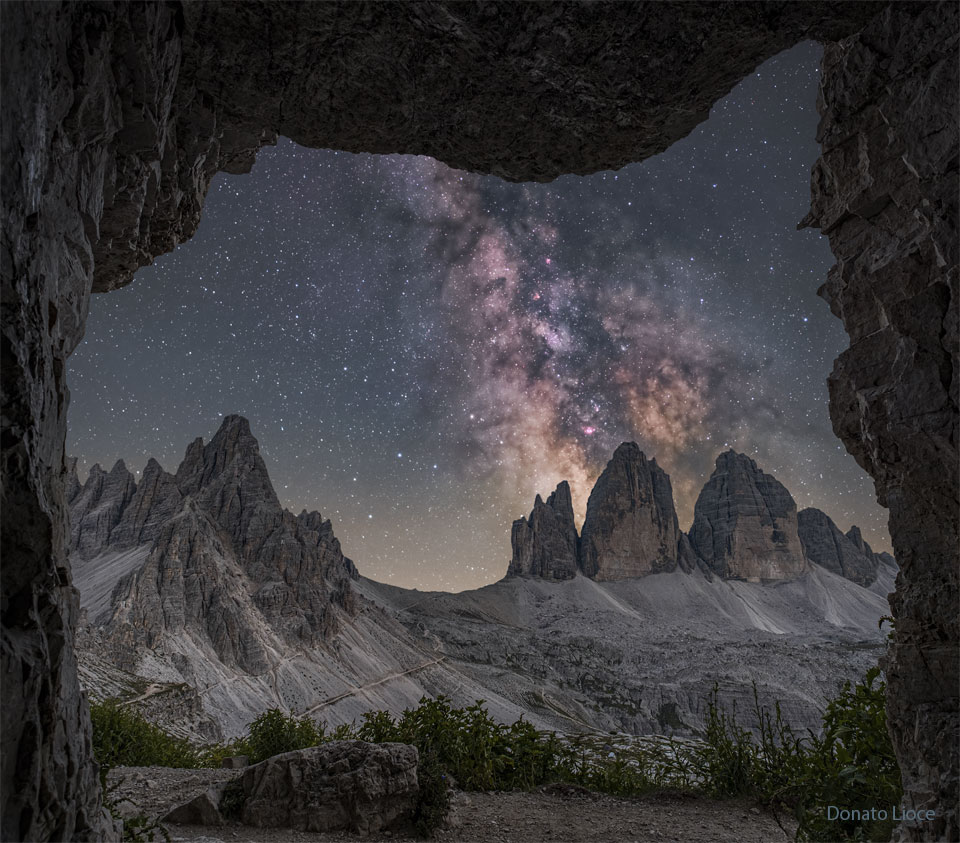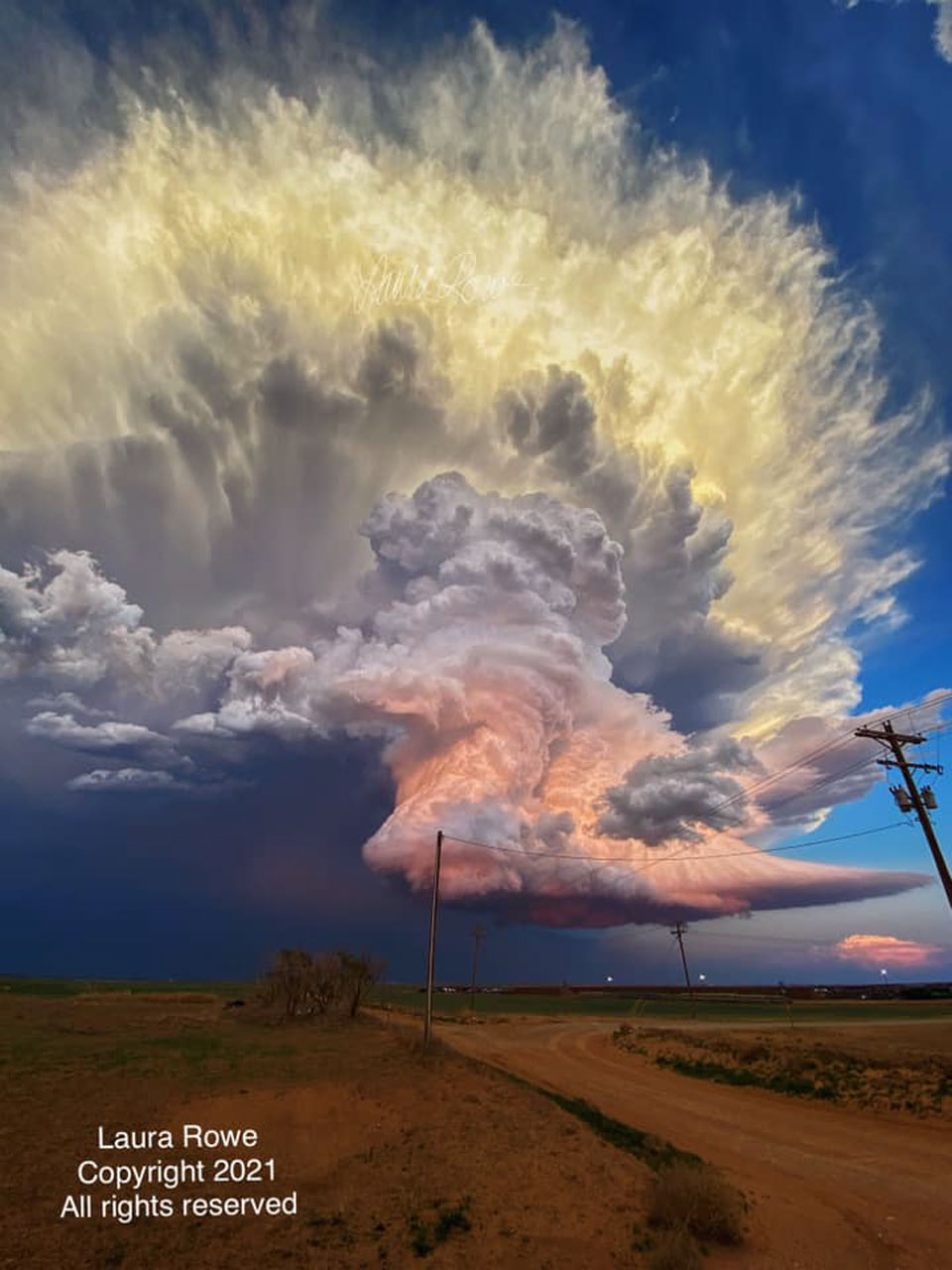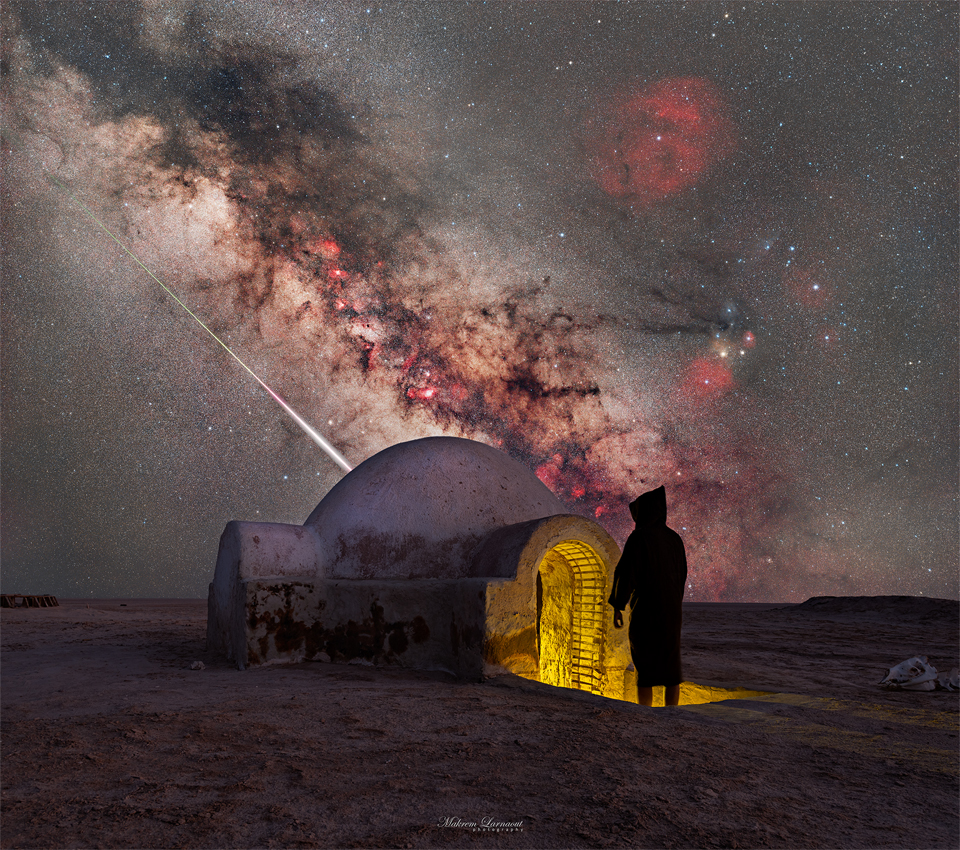
Nombre total de pages vues
07/08/2024
INVENTIONS DE DEMAIN - Tout le crédit sur une même carte

ASTRONOMY - Milky Way Behind Three Merlons
Image Credit & Copyright: Donato Lioce; Text: Natalia Lewandowska (SUNY Oswego)
Explanation: To some, they look like battlements, here protecting us against the center of the Milky Way. The Three Merlons, also called the Three Peaks of Lavaredo, stand tall today because they are made of dense dolomite rock which has better resisted erosion than surrounding softer rock. They formed about 250 million years ago and so are comparable in age with one of the great extinctions of life on Earth. A leading hypothesis is that this great extinction was triggered by an asteroid about 10-km across, larger in size than Mount Everest, impacting the Earth. Humans have gazed up at the stars in the Milky Way and beyond for centuries, making these battlefield-like formations, based in the Sexten Dolomites, a popular place for current and ancient astronomers.
06/08/2024
SANTé/MEDECINE - Savoir lire les résultats d'une prise de sang - (1-e) - Le Volume Globulaire Moyen

ASTRONOMY - Storm Cloud Over Texas
2024 August 6
Image Credit & Copyright: Laura Rowe (Used with permission)
Explanation: What makes this storm cloud so colorful? First, the cloud itself is composed of millions of tiny droplets of water and ice. Its bottom is almost completely flat -- but this isn't unusual. Bottom flatness in clouds is generally caused by air temperature dropping as you go up, and that above a specific height, water-saturated air condenses out water droplets. The shape of the cloud middle is caused by a water-droplet-laden column of air being blown upward. Most unusual, though, are the orange and yellow colors. Both colors are caused by the cloud's water drops reflecting sunlight. The orange color in the cloud's middle and bottom sections are reflections of a nearly red sunset. In contrast, the yellow color of the cloud's top results from reflection of light from a not-yet-setting Sun, where some -- but less -- blue light is being scattered away. Appearing to float above the plains in Texas, the featured impressive image of a dynamic cumulonimbus cloud was captured in 2021 while investigating a tornado.
05/08/2024
INVENTIONS DE DEMAIN - D'énergie et d'eau fraîche

ASTRONOMY - Milky Way Over Tunisia
2024 August 5
Image Credit & Copyright: Makrem Larnaout
Explanation: That's no moon. On the ground, that's the Lars Homestead in Tunisia. And that's not just any galaxy. That's the central band of our own Milky Way galaxy. Last, that's not just any meteor. It is a bright fireball likely from last year's Perseids meteor shower. The featured image composite combines consecutive exposures taken by the same camera from the same location. This year's Perseids peak during the coming weekend is expected to show the most meteors after the first quarter moon sets, near midnight. To best experience a meteor shower, you should have clear and dark skies, a comfortable seat, and patience.
04/08/2024
SANTé/MEDECINE - Savoir lire les résultats d'une prise de sang - (1 - c) - L'hématologie - (1-d) - L'hématocrite
ASTRONOMY - Gaia: Here Comes the Sun
2024 August 4
Credit: Galaxy Illustration: N. Risinger (skysurvey.org);
Star Data: Gaia Mission, ESA, A. S. Sellés (U. Heidelberg) et al.
Explanation: What would it look like to return home from outside our galaxy? Although designed to answer greater questions, data from ESA's robotic Gaia mission is helping to provide a uniquely modern perspective on humanity's place in the universe. Gaia orbits the Sun near the Earth and resolves stars' positions so precisely that it can determine a slight shift from its changing vantage point over the course of a year, a shift that is proportionately smaller for more distant stars -- and so determines distance. In the first sequence of the video, an illustration of the Milky Way is shown that soon resolves into a three-dimensional visualization of Gaia star data. A few notable stars are labelled with their common names, while others stars are labelled with numbers from a Gaia catalog. Eventually, the viewer arrives in our stellar neighborhood where many stars were tracked by Gaia, and soon at our home star Sol, the Sun. At the video's end, the reflective glow of Sol's third planet becomes visible: Earth.
ASTRONOMY - Orion and the Ocean of Storms
2025 December 13 Orion and the Ocean of Storms Image Credit: NASA , Artemis 1 Explanation: On December 5, 2022, a camera on board the u...

-
2022 September 26 All the Water on Planet Earth Illustration Credit: Jack Cook, Adam Nieman, Woods Hole Oceanographic Institution ; Data ...
-
2025 May 11 The Surface of Venus from Venera 14 Image Credit: Soviet Planetary Exploration Program , Venera 14 ; Processing & Copyri...



